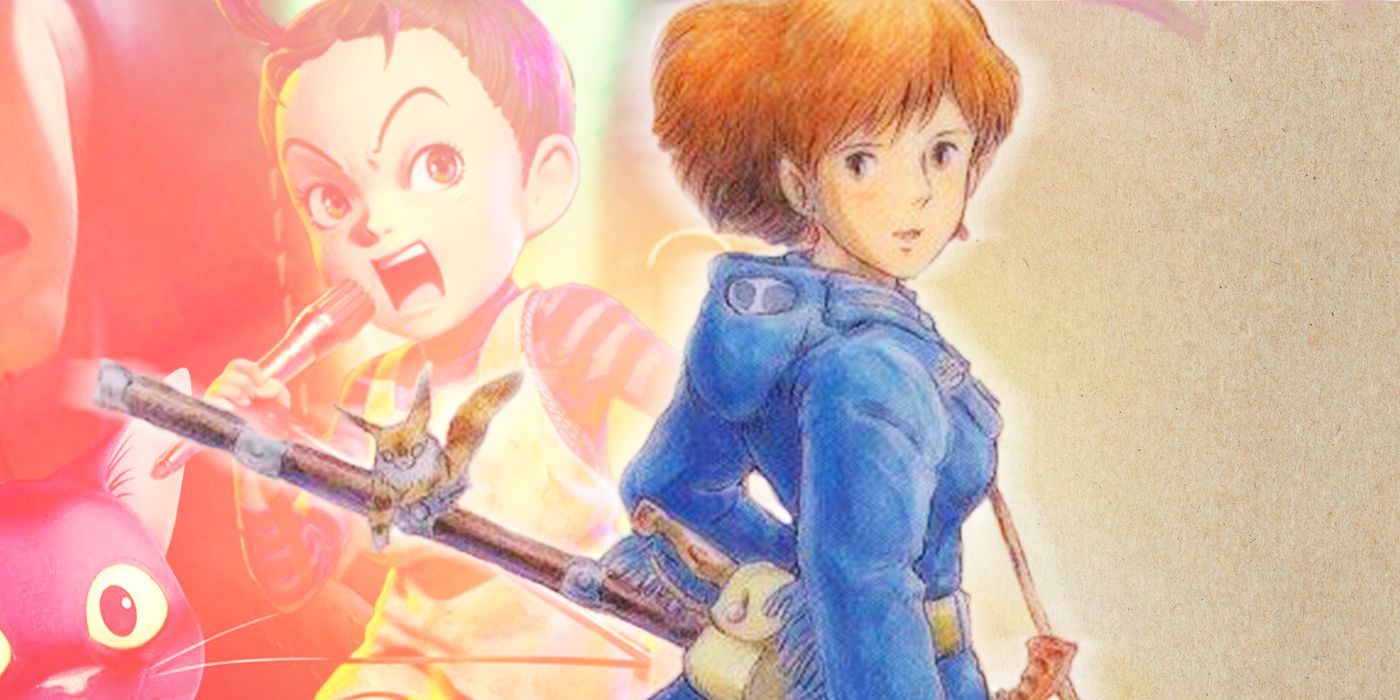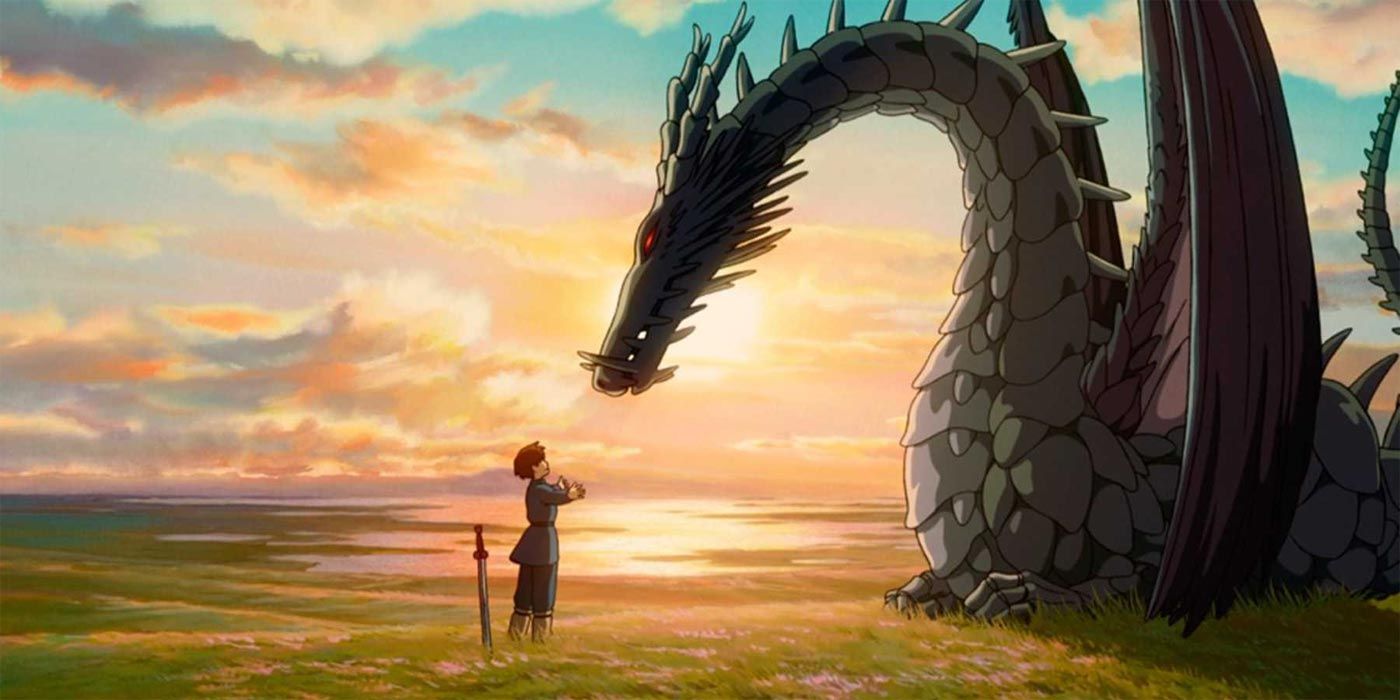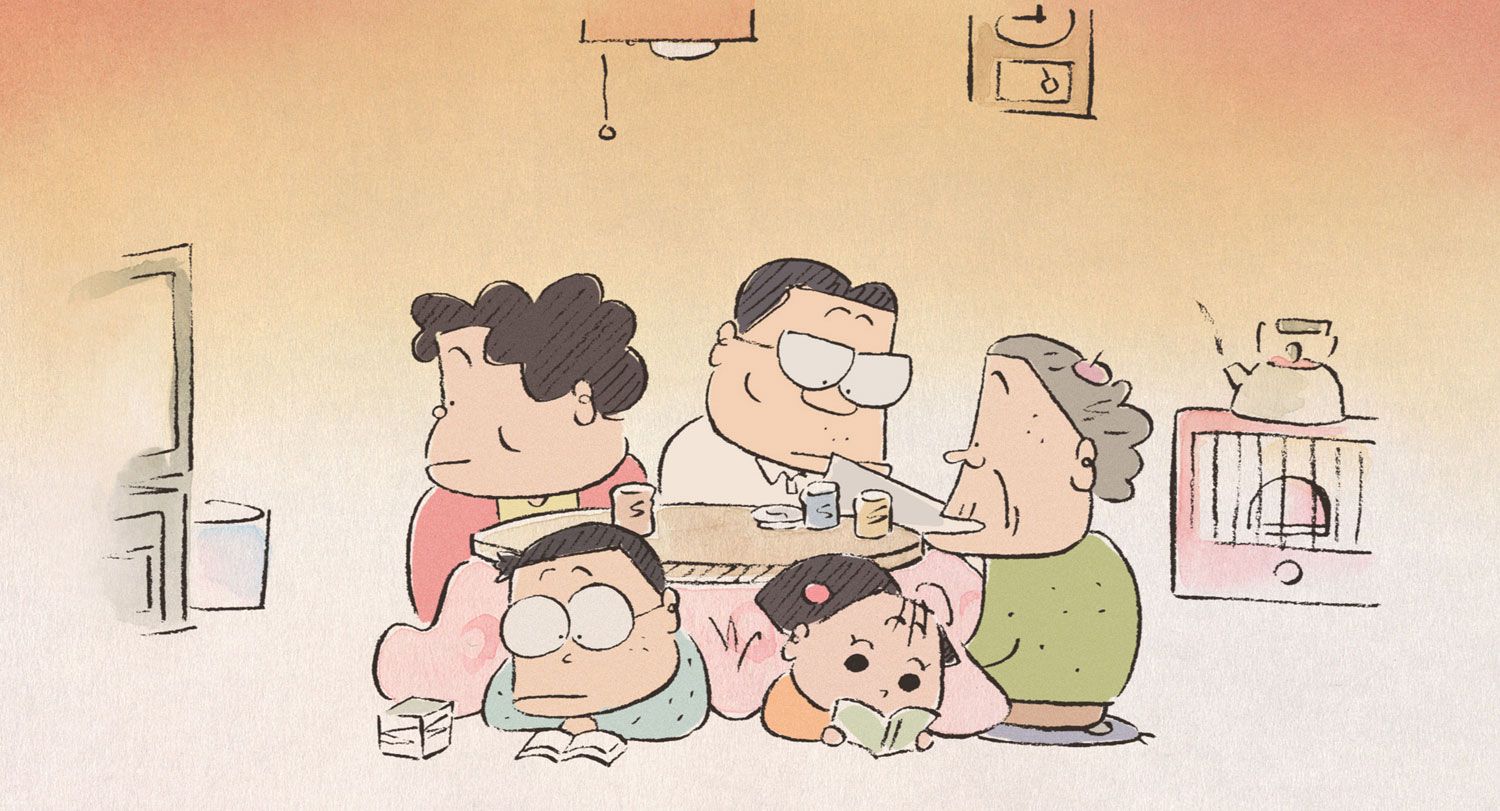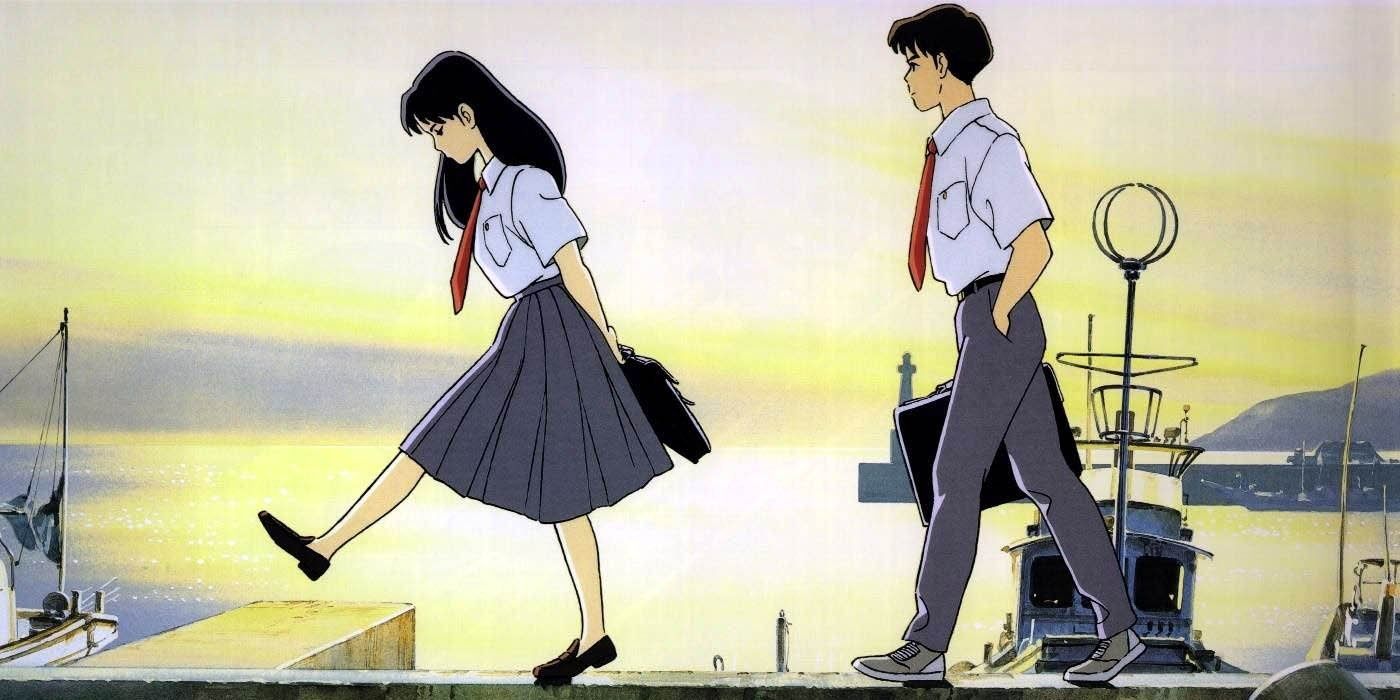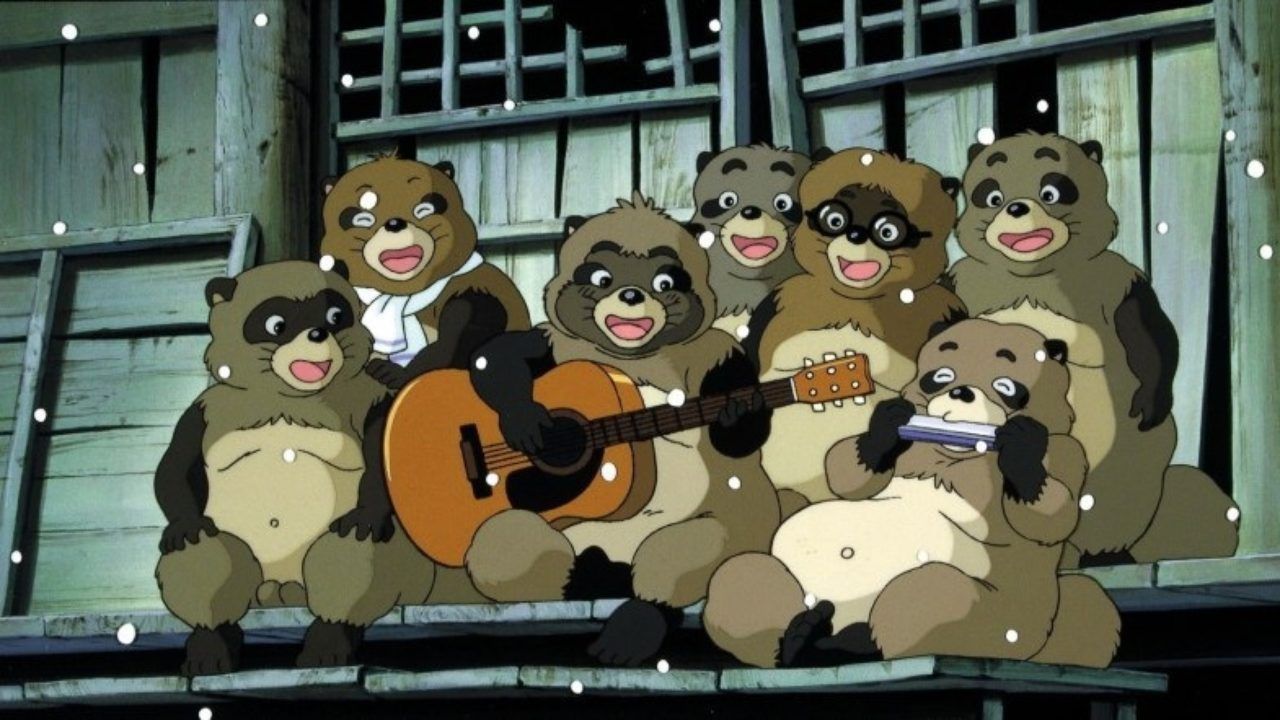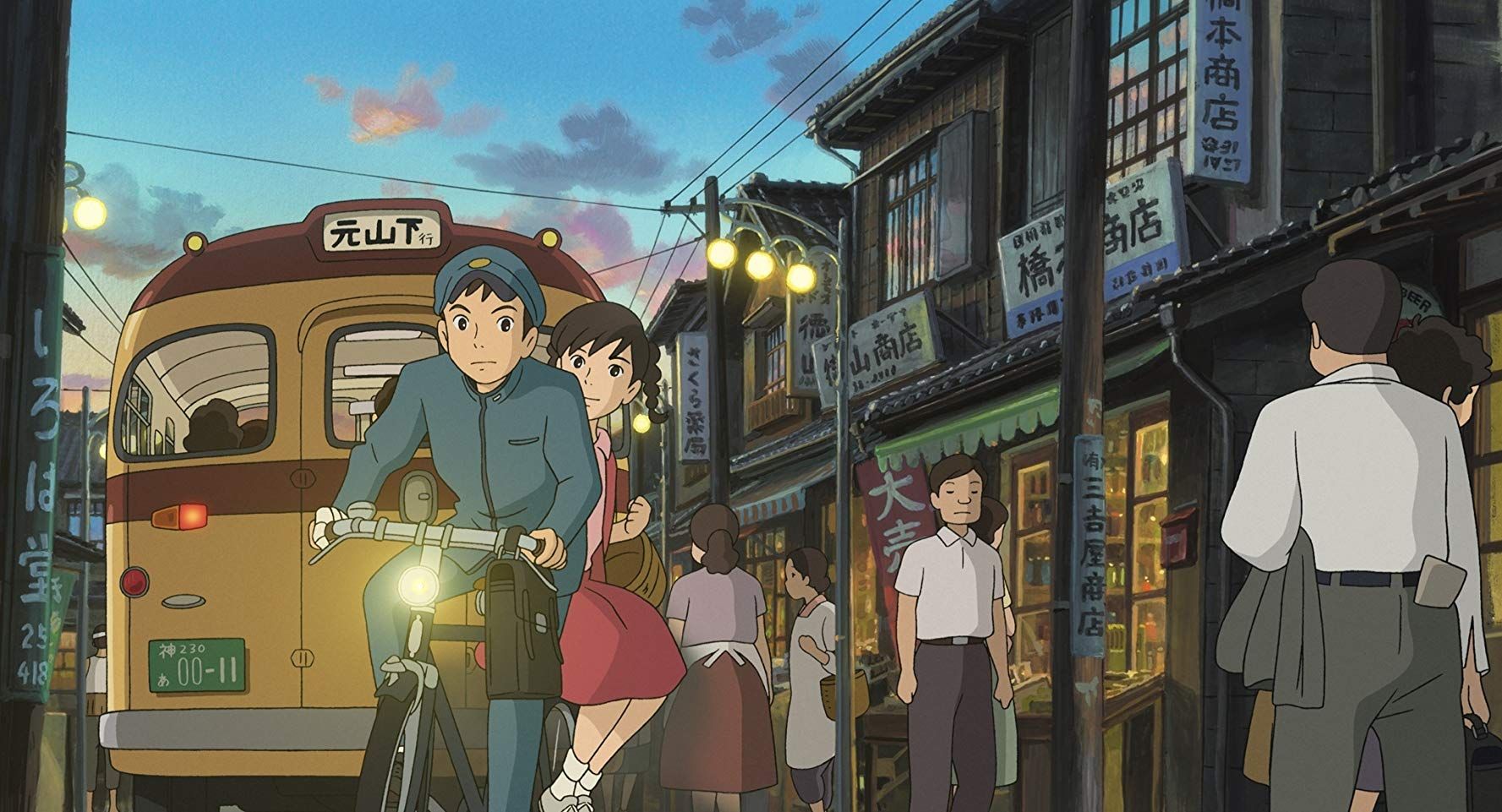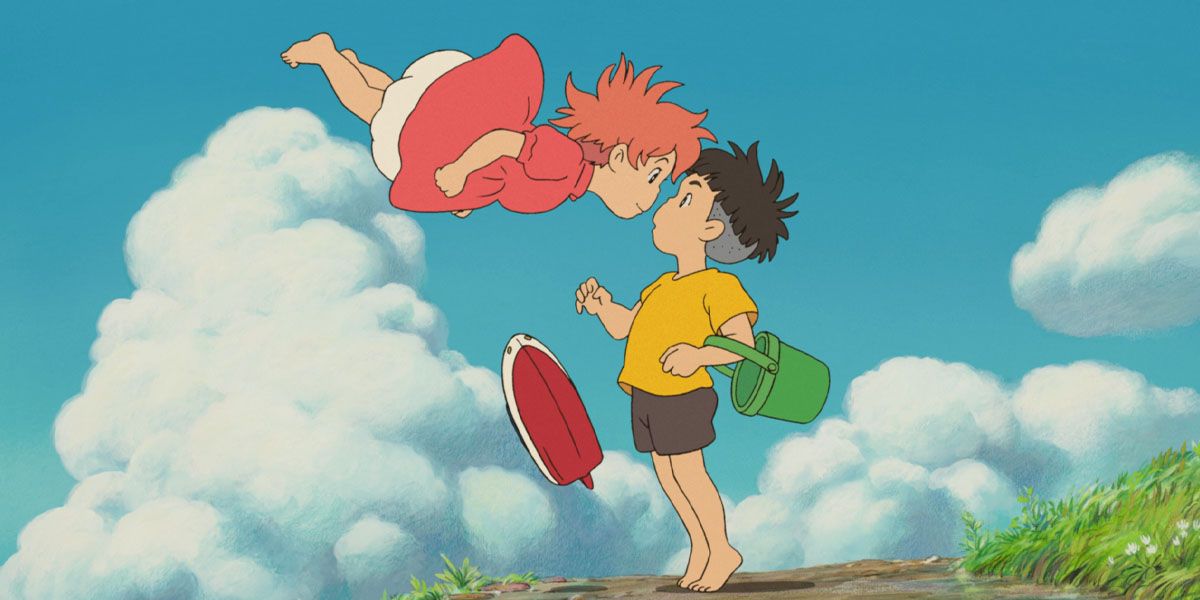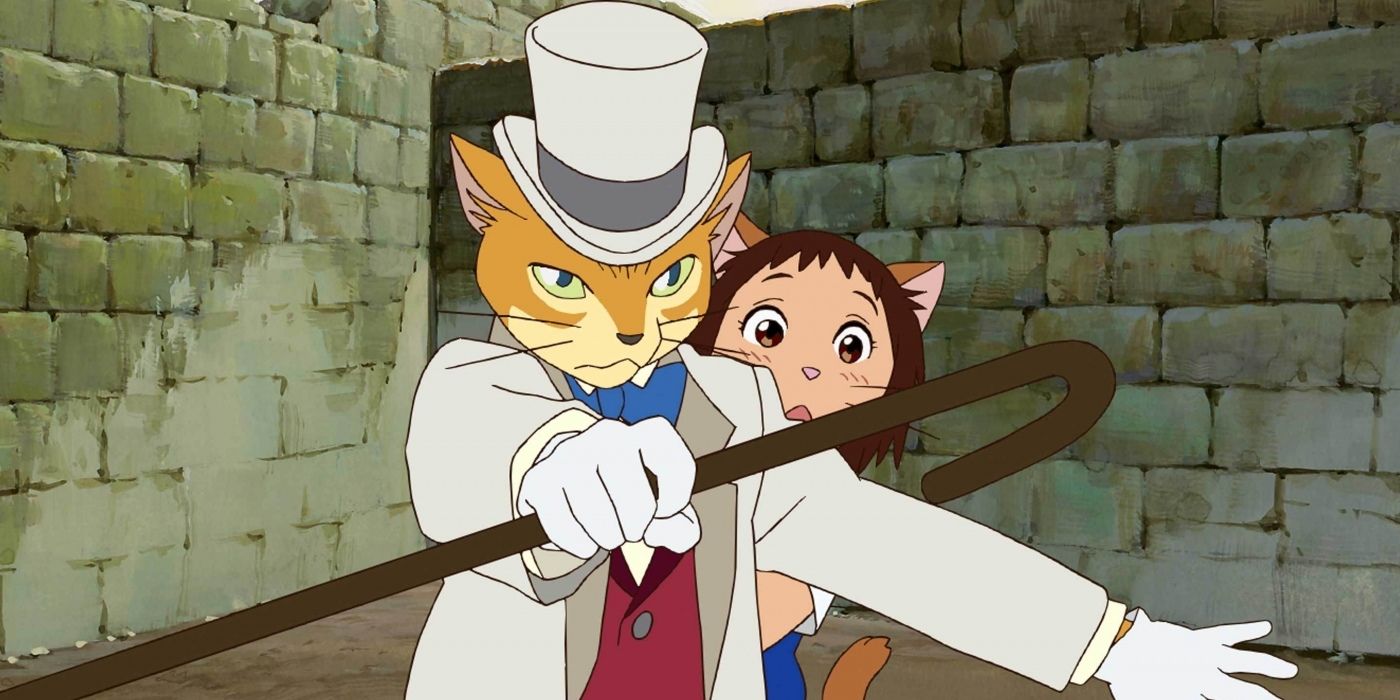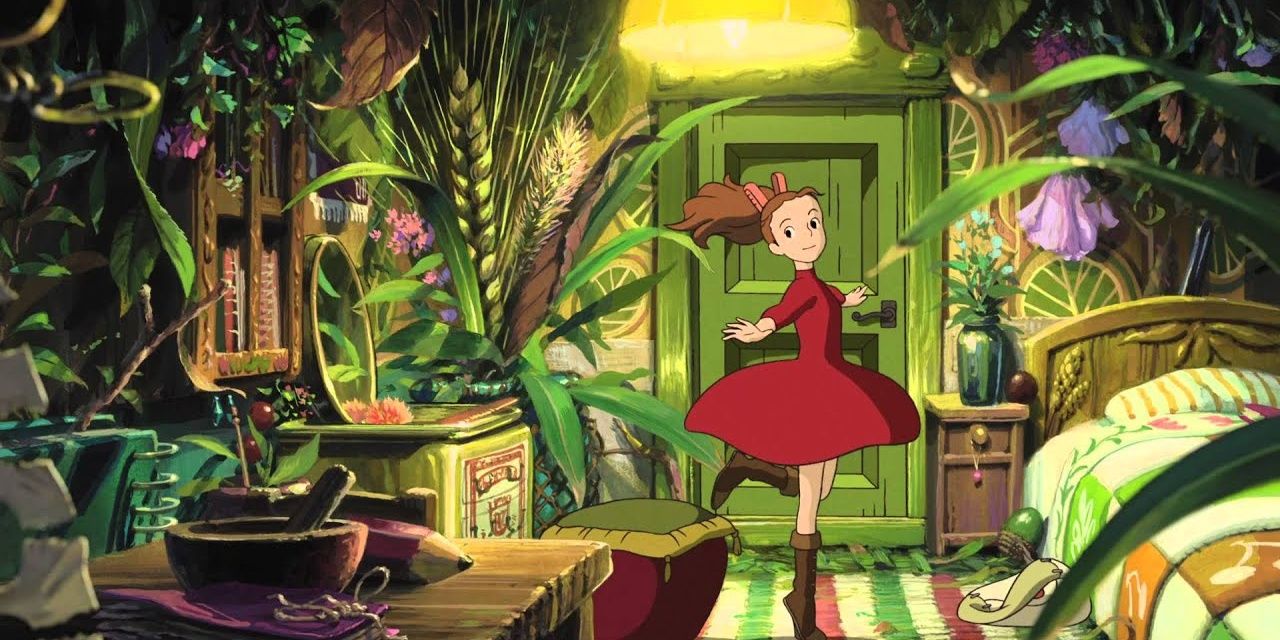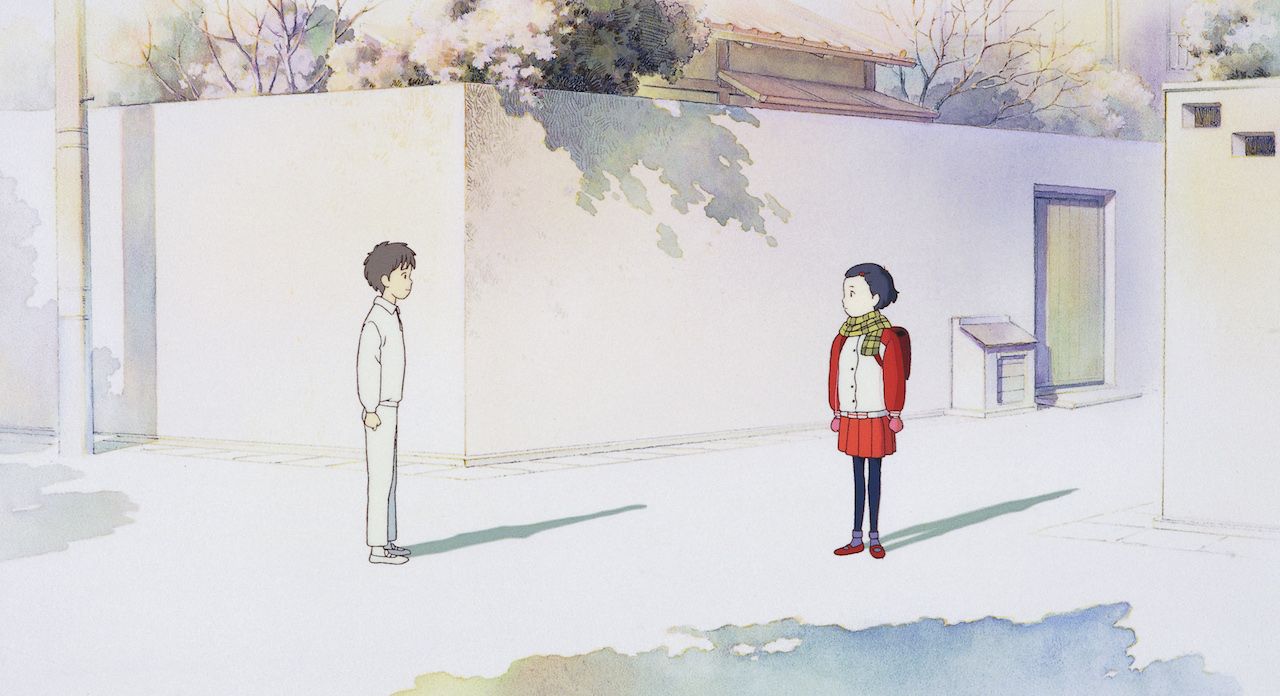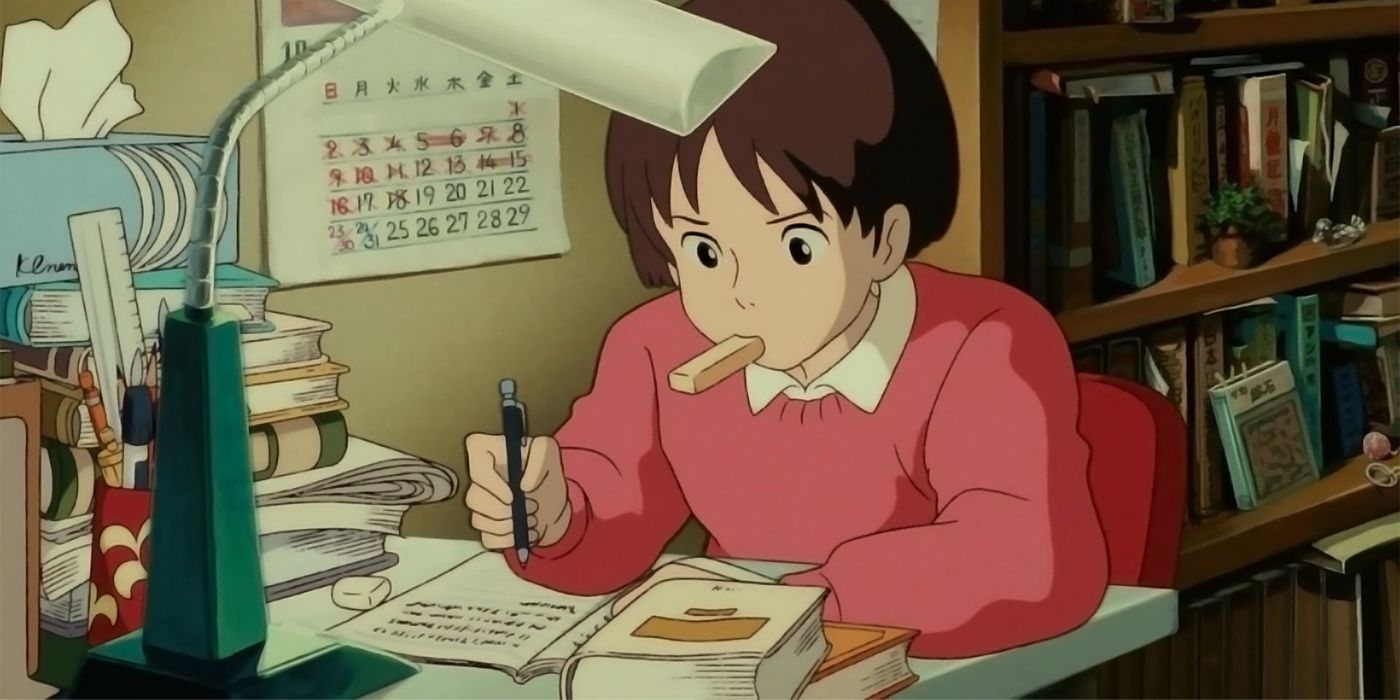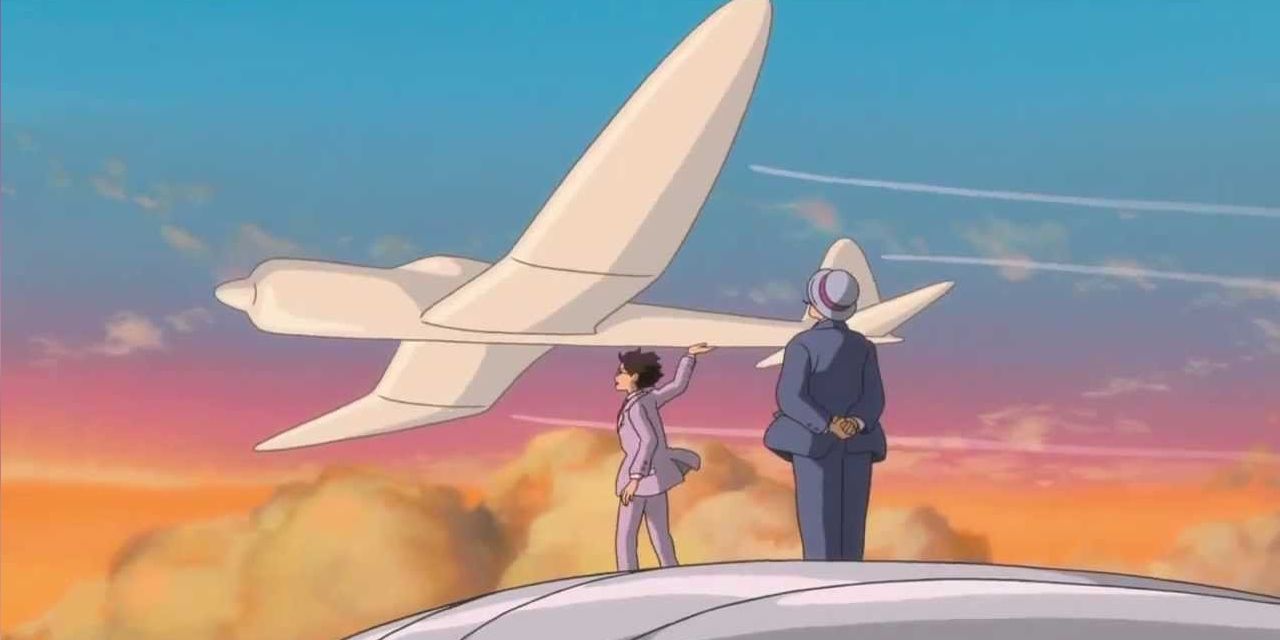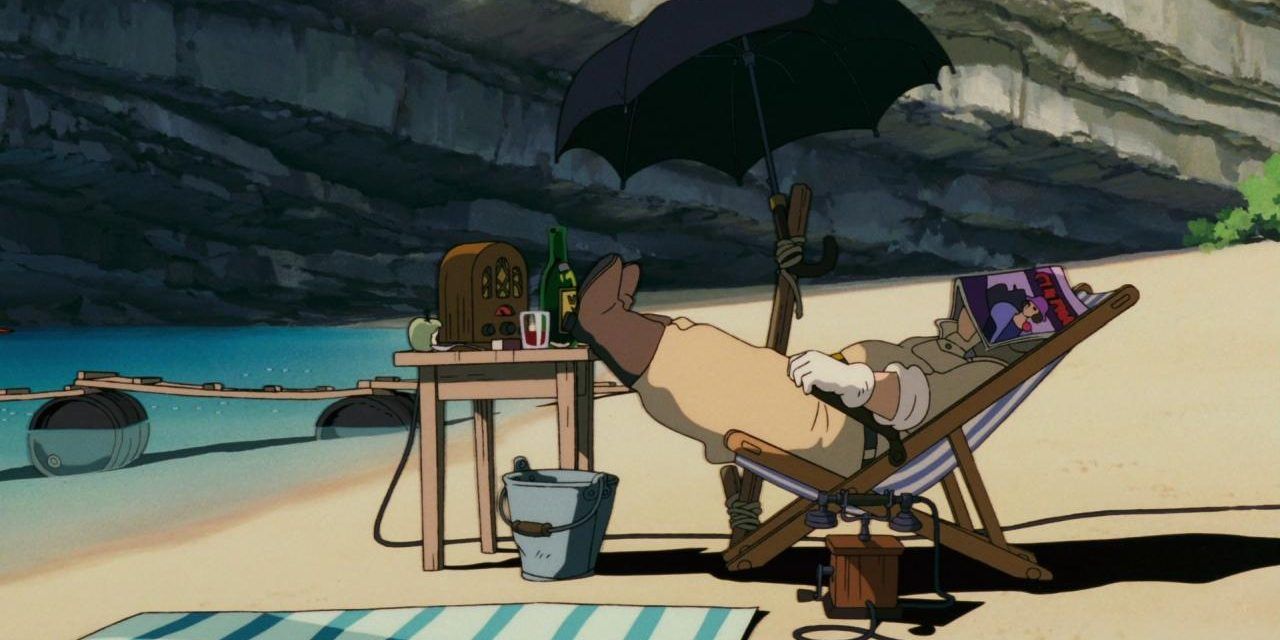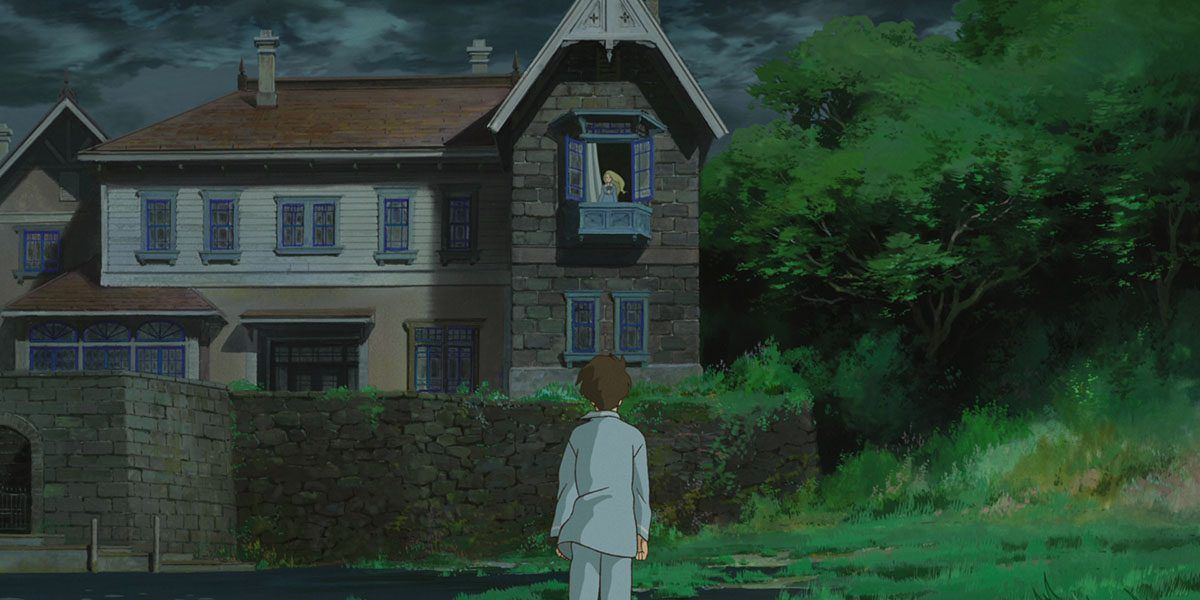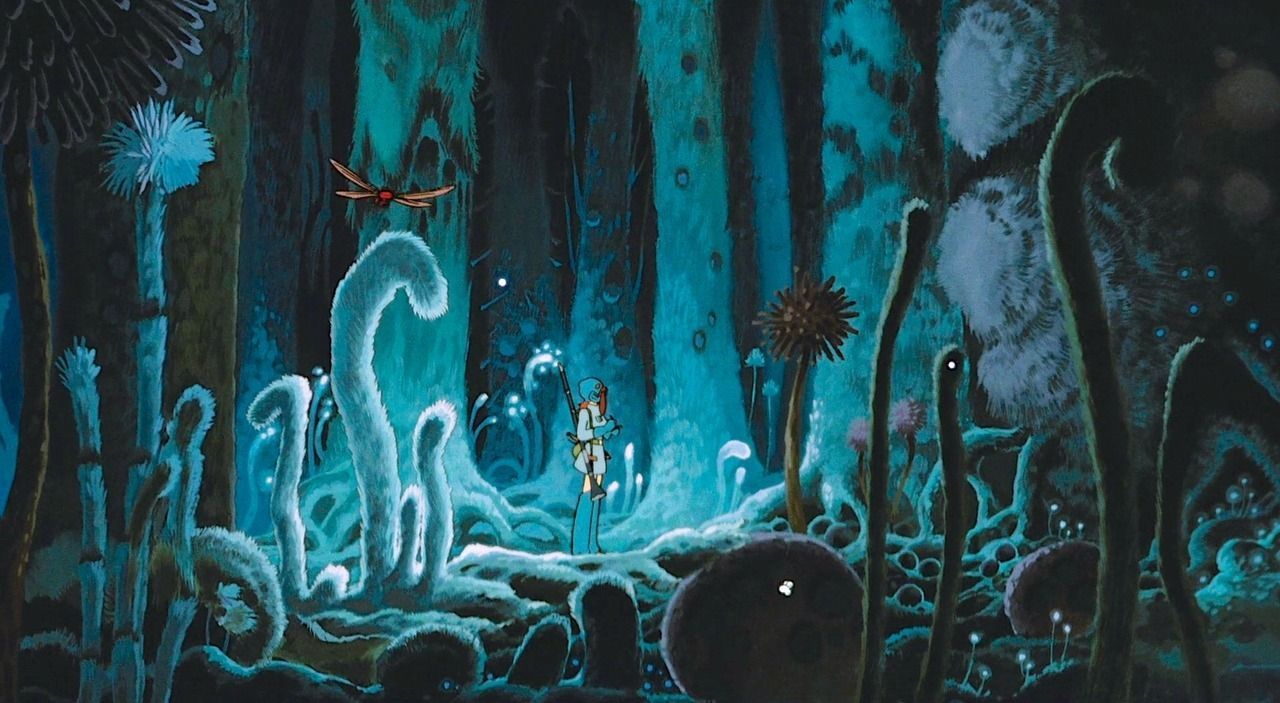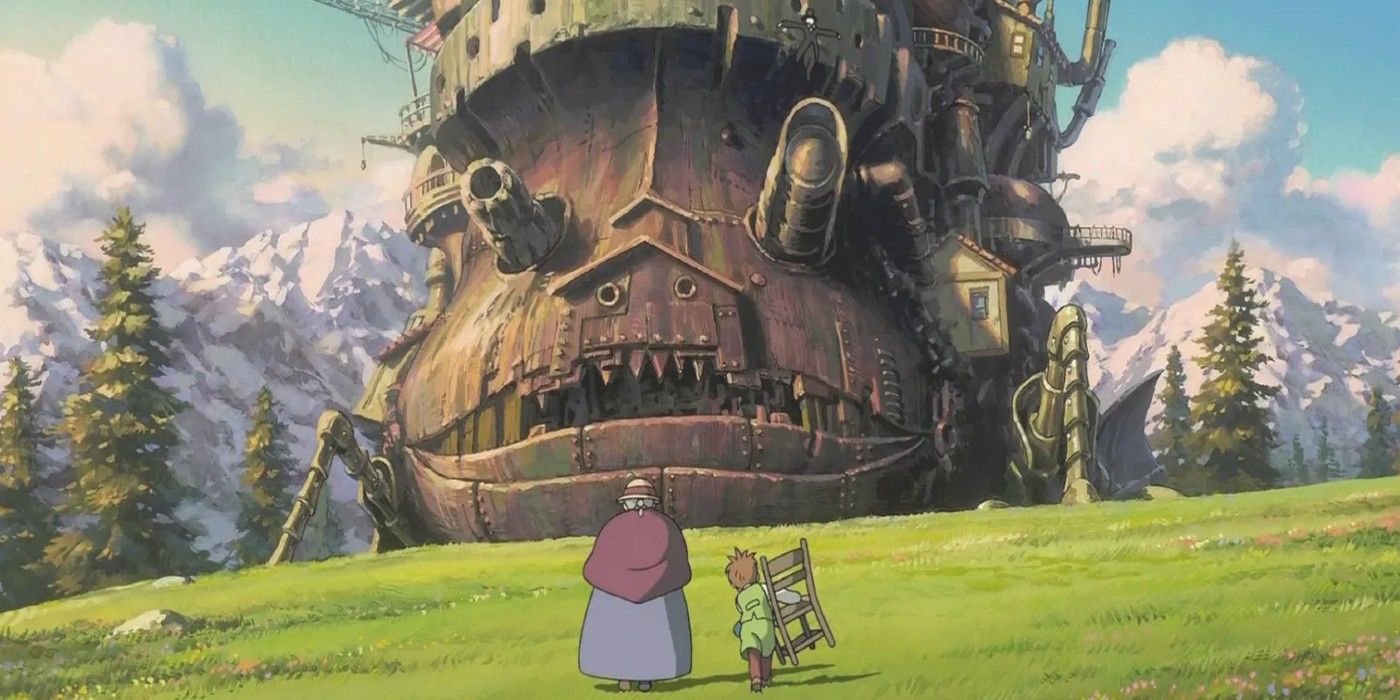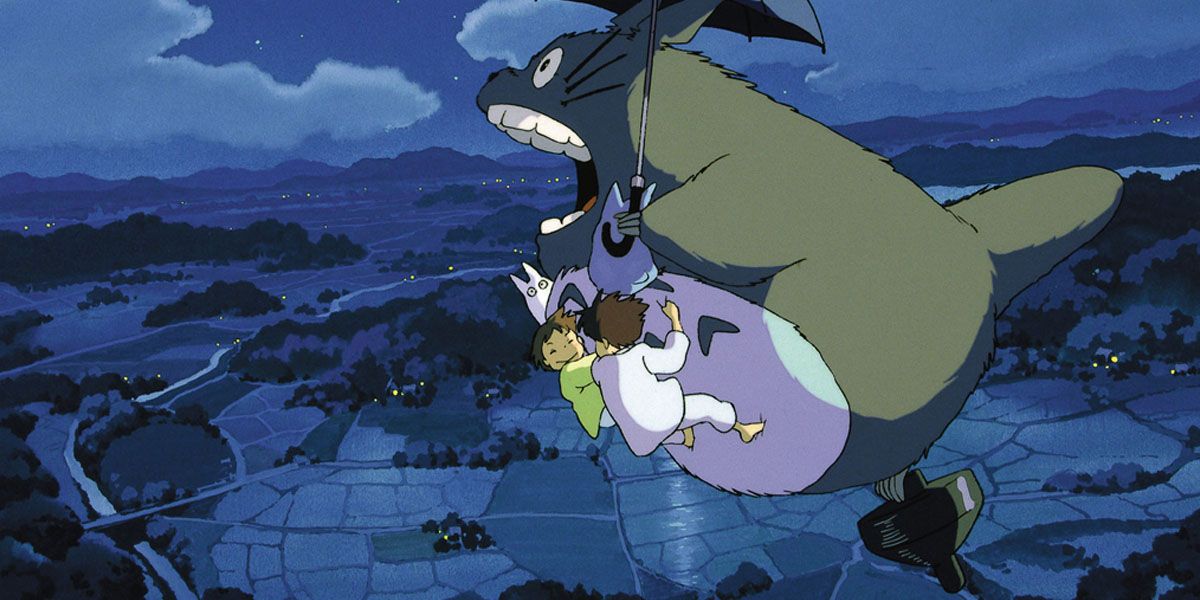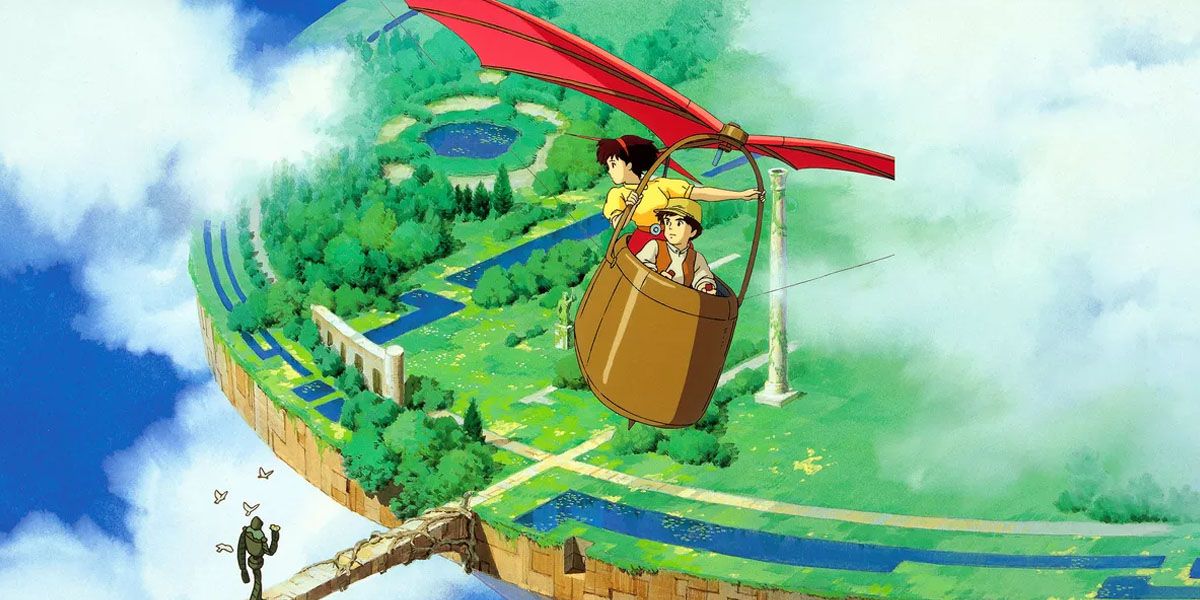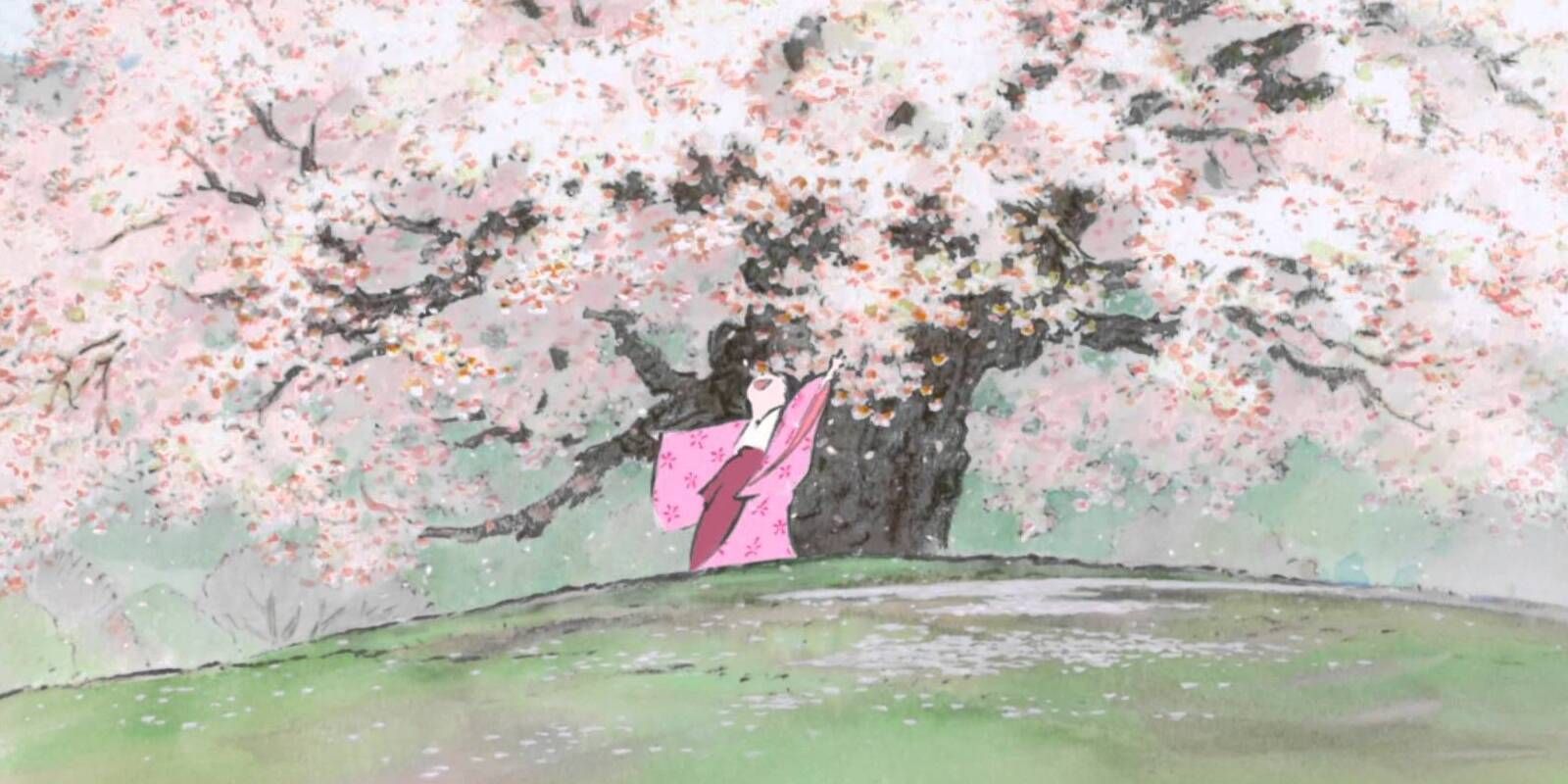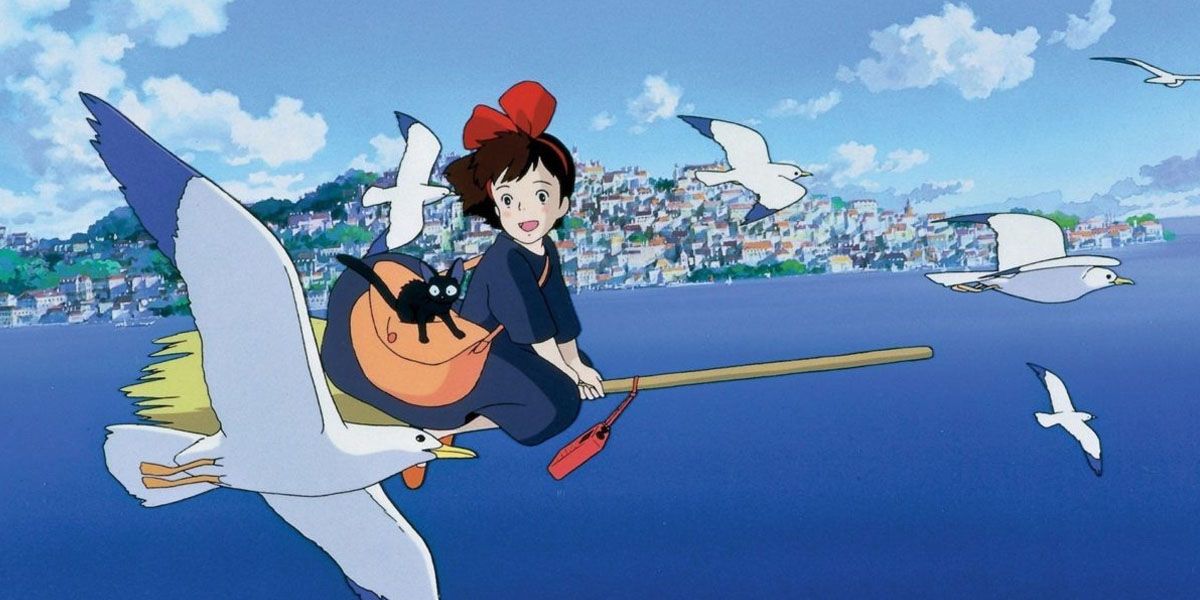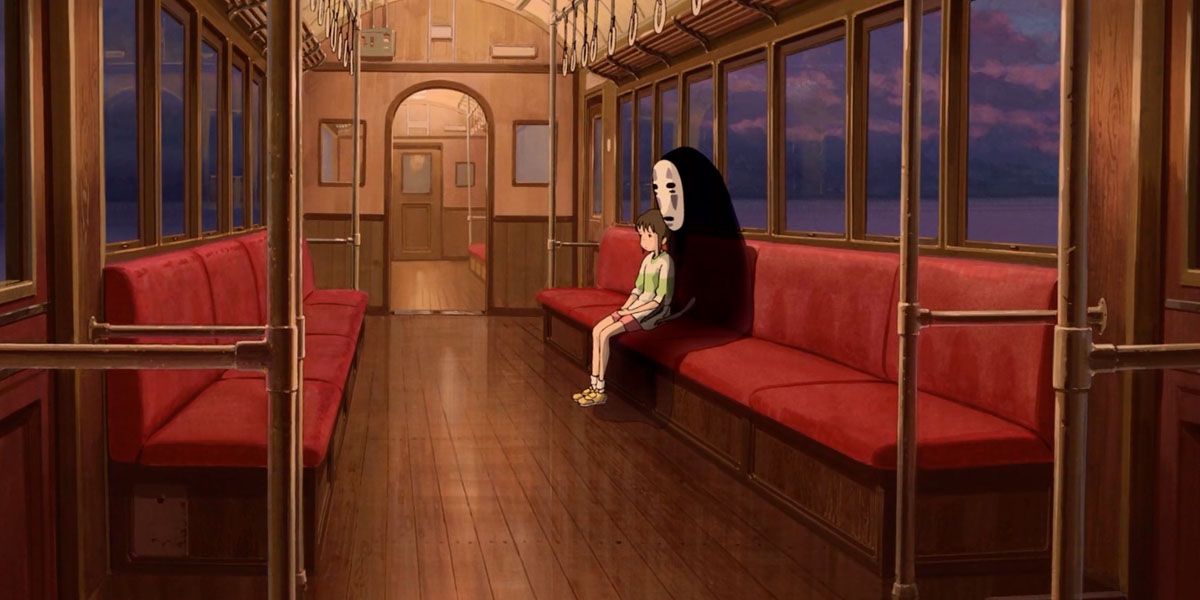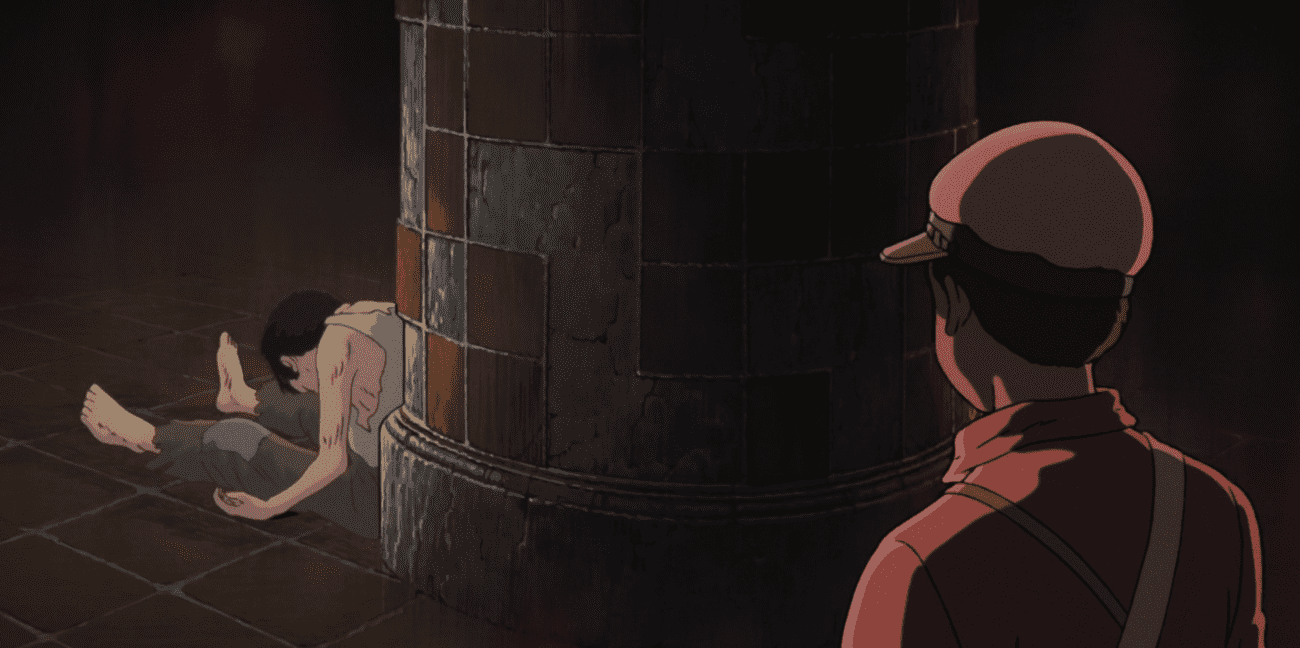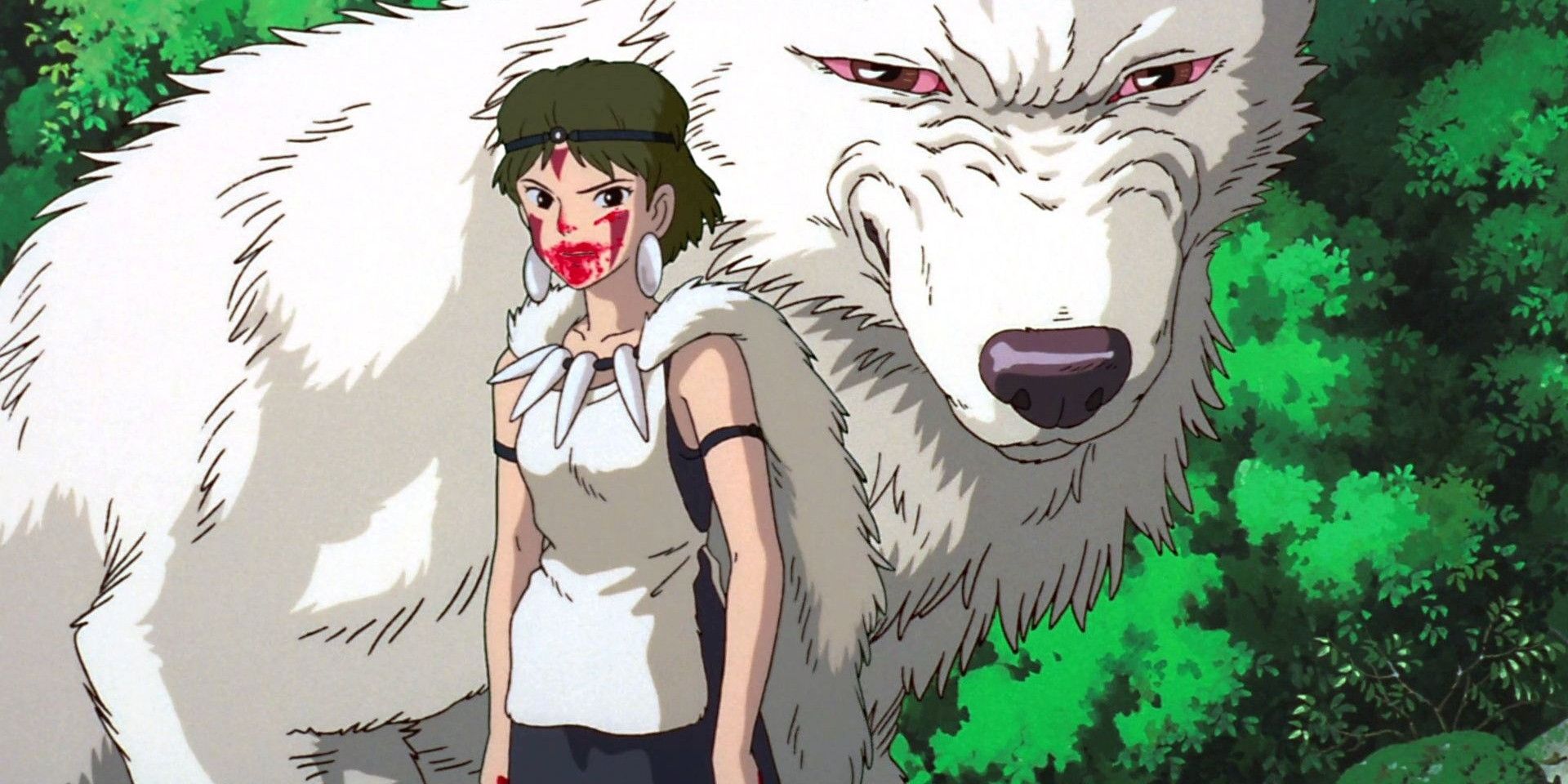Studio Ghibli's films have enchanted generations of viewers around the world. In light of the release of the studio's latest feature, Earwig and the Witch, now is the perfect time to rank the studio's 23 feature-length anime (counting Nausicaa of the Valley of the Wind, which technically predates the studio's official founding but is widely considered an honorary Ghibli film). Which films are the studio's masterpieces, and which ones are less-than-stellar?
23. Tales From Earthsea
Tales From Earthsea is undeniably the weakest entry in the Studio Ghibli library. As a movie, it's poorly written; as an adaptation, it's a huge case of wasted potential. Possibly no book series better lends itself to the Studio Ghibli aesthetic than Ursula K. Le Guin's Earthsea novels. However, due to Hayao Miyazaki focusing on Howl's Moving Castle at the time, the production was rushed and directorial duties were handed to Goro Miyazaki, who had never directed a film before. It's no wonder the film turned out the way it did.
22. Earwig and the Witch
Sadly, Studio Ghibli's first feature film since 2014 is a miss, not a hit. Earwig and the Witch is the studio's first fully CG animated film, and while it gets a lot of things right, it gets a lot wrong too. The story is breezy and charming but extremely uneventful, lacking the impact a lot of the greater Ghibli films have. However, whereas Earthsea's problems were the result of an overly loose adaptation, Earwig's narrative issues stem directly from Diana Wynne Jones' original novel.
21. My Neighbors the Yamadas
My Neighbors the Yamadas, based on the manga Nono-chan by Hisaichi Ishii, is a series of slice-of-life vignettes. The experimental animation style is the most distinct thing about Isao Takahata's film. The film is undeniably charming and has some funny moments, but as a whole, it just doesn't stand out when compared to the rest of Ghibli's films aside from its visuals.
2o. Ocean Waves
Ocean Waves is a made-for-television production. Only 72 minutes long, it's Studio Ghibli's shortest feature. Its simple story of teenage love is told primarily through flashbacks. The film has gained a second life thanks to people using clips from it in vaporware montages. It's good as far as '90s anime dramas go, but it's not a great Studio Ghibli film.
19. Pom Poko
Pom Poko is an odd fantasy about tanukis rising up against humanity's nature-tearing industry. Isao Takahata's film has a lot to say about humanity's relationship with nature, though Studio Ghibli's other films make similar points better. Pom Poko excels when it focuses on the tanuki culture and magical abilities. Takahata brings these fantastic creatures to life -- magic testicles and all -- in a loving tribute to Japan's folklore that addresses concerns about the country's future.
18. From Up on Poppy Hill
People say Goro Miyazaki is a bad director have not seen From Up on Poppy Hill. Goro Miyazaki's sophomore film is easily his best so far. Based on the manga by Chizuru Takahashi and Tetsurō Sayama, with a screenplay by Hayao Miyazaki and Keiko Niwa, From Up on Poppy Hill is a coming-of-age melodrama set in the '60s. The plot cents on two teens restoring a clubhouse that might be torn down by their town. The two teens soon start to fall in love -- only to learn they might actually be related. From Up on Poppy Hill a genuinely charming and surprisingly wild story that often gets overlooked.
17. Ponyo
Ponyo is the weakest film directed by Hayao Miyazaki -- but it's still absolutely beautiful. Ponyo is in essence an adaptation of The Little Mermaid, centered on a young boy named Sosuke who meets a strange fish-girl named Ponyo. The two fall in love, which results in some weird weather problems that might destroy the world. Ponyo is beautifully animated, full of rich and fascinating characters (Sosuke's mom is arguably the best among them). That it ranks so low just says a lot about Ghibli's high standard of quality.
16. The Cat Returns
The Cat Returns is a spin-off of Whisper of the Heart. The imaginative story focuses on Haru, a girl who can talk to cats. After saving a cat from a car, she ends up being brought into a magical kingdom for cats, where she finds herself starting to transform into a kitten herself. The Cat Returns is just this charming little adventure that people unfairly overlook. It's not life-changing, but it will leave you enchanted for every second of its runtime.
15. Arrietty
With Arrietty, Hiromasa Yonebayashi proved he could create enchanting fantasies on-par with the works of Miyazaki and Takahata. Adaptation from The Borrowers books by Mary Norton, it centers on a little group of fair folk who collect lost items that people have missed. Arrietty successfully captures the fairy tale feeling of previous Ghibli classics like My Neighbor Totoro and Kiki's Delivery Service.
14. Only Yesterday
Only Yesterday is a hard film to discuss. The story centers on a woman in her late 20s thinking back to her childhood and the decisions she made that led her to this point in her life. It's one of Isao Takahata's most intimate films, incredibly moving and fairly melancholic. At the same time, a lot of audiences might feel bored by its slow, meditative pace; unlike a lot of Studio Ghibli films, it's not something all ages will enjoy. This isn't a film for everyone, but those who need this film will be profoundly moved by it.
13. Whisper of the Heart
Whisper of the Heart is the only film directed by Yoshifumi Kondō, a man who would have been Hayao Miyazaki's successor if not for his sudden death in 1998. Watching Whisper of the Heart, one cannot help but feel a tremendous sense of loss, knowing we lost a genius in his prime. The film's protagonist is Shizuku, an imaginative 14-year-old who loves writing. The story centers both on her budding friendship/romance with Seiji and her budding identity as a creator. Few other films capture the stress and joy of creative endeavors quite like this film, especially with the imaginative fantasy sequences involving the Baron -- who would return in The Cat Returns.
12. The Wind Rises
The Wind Rises, Hayao Miyazaki's most recent film, is a highly fictionalized version of the life of Jiro Horikoshi, who designed airplanes used by Japan during World War II. The film is a deeply complicated look at the pursuit of your dreams. Sure, Jiro creates flying machines like he's always dreamed of, but he needs to grapple with the fact that his creations are being used to destroy and kill. For as much as The Wind Rises is a film about innovation, it's also a film about regret and tragedy.
11. Porco Rosso
One of the purest expressions of Miyazaki's love of flight, Porco Rosso focuses on a former Italian fighter pilot who works as a bounty hunter. Said bounty hunter, though, has been mysteriously cursed to look like a pig. The film is an exercise in high-energy dogfights, wild and eccentric characters and self-improvement. It's at once whimsical and imaginative, high-spirited and low-key. Porco Rosso's a drop more cynical and adult-oriented than Miyazaki's usual fare, but viewers of all ages should find much to love about it.
10. When Marnie Was There
When Marnie Was There is the best Studio Ghibli film not directed by Takahata or Miyazaki. Hiromasa Yonebayashi's sophomore film, based on a novel by Joan G. Robinson, centers on a depressed young girl named Anna who spends a summer in the country to deal with her asthma. She finds herself drawn to an abandoned mansion where, on occasion, she finds an enigmatic girl named Marnie who is either a figment of her imagination or a lost soul reaching out for someone.
Studio Ghibli films are usually larger than life, while When Marnie Was There feels oddly small. The first half is slow-paced, but the film's emotional second half more than makes up for that. The story behind the old mansion and Marnie is simultaneously heartbreaking and surprisingly heartwarming. You will probably cry watching this movie.
9. Nausicaa of the Valley of the Wind
Nausicaa of the Valley of the Wind technically predates Ghibli's founding, but its success helped create Studio Ghibli and it's included in both Netflix and HBO Max's Studio Ghibli collections. The film takes place in a post-apocalyptic wasteland where toxic jungles of mushrooms have overtaken the planet following a destructive war. Princess Nausicaa stands between multiple warring countries who plan on obliterating the toxic jungle once and for all -- but this plan might put the whole world in grave danger.
In many ways, Nausicaa of the Valley of the Wind serves as a rough-draft to what Miyazaki would later do with Castle in the Sky and Princess Mononoke. Nausicaa is a little too perfect of a protagonist, but the movie's atmospheric visuals, beautiful soundtrack and many unforgettable scenes make it easy to overlook any problems with characterization.
8. Howl's Moving Castle
Sophie is the daughter of a hatmaker who thinks very little of herself. After a chance encounter with the magician Howl and the Witch of the Waste, Sophie is transformed into an old woman. In her pursuit to find a cure to her curse, she becomes entangled in magic, demonic contracts, and pointless wars without end.
Howl's Moving Castle, much like its titular Howl, is a beautiful hot mess of a movie. Diverging wildly from the Diana Wynne Jones novel it's based on, the plot does not flow in a logical path, with some subplots feeling shoehorned in. Yet none of that matters because the characters are so lovable. Howl's Moving Castle is a beautiful, heartwarming romance that balances many themes, becoming more than the sum of its parts.
7. My Neighbor Totoro
My Neighbor Totoro follows two sisters, Satsuki and Mei, who move to a new home that happens to be connected to several fantastic creatures. Dust sprites linger in empty homes, cat buses dart between the trees, and a titanic, fluffy creature known as Totoro reclines lazily.
What elevates My Neighbor Totoro over something like Earwig is how the layers of cute fantasy meld with uncomfortable realities. The girls' mother is hospitalized due to a very serious illness. At one point, the younger sister Mei goes missing and the whole town searches for her. These moments of seriousness blend perfectly with the whimsical and adorable elements to create a memorable and moving experience.
6. Castle in the Sky
Technically the first movie released as a Studio Ghibli film, Castle in the Sky is a stunning movie to start off on. The movie centers on Sheeta, a young girl who holds possession of a mysterious crystal. A government agent named Muska is in hot pursuit of her. She ends up crossing paths with a boy named Pazu, setting both of them off on an adventure to find Laputa, a floating castle in the sky.
Castle in the Sky is one of the best steampunk movies ever made. This adventure takes these two kids into the path of air pirates, automatons and one of the few genuinely evil and unsympathetic villains in the Studio Ghibli library. Arguably Miyazaki's most cinematic film, it captures the pure spirit of storytelling.
5. The Tale of Princess Kaguya
The Tale of Princess Kaguya is the final film Isao Takahata directed before his passing. A faithful adaptation of a 10th-century Japanese legend, it follows the titular princess from her birth in a bamboo shoot to her ascent to the kingdom of the moon. It's a familiar story for Japanese audiences, but Takahata's telling packs an emotional punch.
What makes The Tale of Princess Kaguya so distinct is its unique animation style. It's reminiscent of traditional Japanese artwork, fitting the mythological story, and goes into levels of abstraction unseen in any other Ghibli film. The story has been told countless times, but Kaguya is a film unlike any other.
4. Kiki's Delivery Service
Kiki's Delivery Service follows a young witch named Kiki who, as part of her coming-of-age tradition, travels to a far-off town. She takes on a job working for a bakery, delivering packages to people in the area. Kiki's Delivery Service is a quiet film without much in the way of a heavy plot, but its strength is in how earnestly it presents the mundane.
For many people, the last act of the film resonates the hardest, where Kiki has become burnt out and is left feeling miserable, a feeling made manifest by her losing her powers. The payoff makes this one of the most earnest and honest coming-of-age stories ever, showcasing the difficulties one has when recovering from the exhausting demands of life while still finding meaning and value in what you do.
3. Spirited Away
Spirited Away centers on Chihiro, a young girl whose family stumbles upon an abandoned theme park that is actually a bathhouse for spirits. After her parents are transformed into pigs, Chihiro is forced into servitude at the bathhouse to save them. The magical adventure that ensues makes Alice's trip down the rabbit hole look like a slow Sunday.
Spirited Away is the only of Hayao Miyazaki's films to win Best Animated Picture at the Oscars. Everyone loves this film. In many ways, it's a perfect film, with amazing animation, music and characters. What could possibly rank higher than something this perfect?
2. Grave of the Fireflies
Grave of the Fireflies is Isao Takahata's greatest film... and also his least enjoyable to actually watch. Based on Akiyuki Nosaka's semi-autobiographical short story of the same name, it follows two siblings left orphaned during the World War II firebombings. After running away from their dominating aunt, the two siblings try to survive on their own... and fail.
There is no hope in this movie. The movie starts with the main character dying alone. The rest of the film is a slow exploration of how these two children starved to death in an uncaring, apathetic world. This heartbreaking film is a multi-layered warning to future generations, a film demonstrating the costs of war and an exploration of childish pride. Grave of the Fireflies is a profoundly moving film everyone should watch once, but it just hits too hard for most people to want to rewatch.
1. Princess Mononoke
Prince Ashitaka is cursed when a demon passing through his hidden village brands him with a mark that will consume his body and soul. Though he cannot alter his fate, he rises to meet it by seeking out the demon's origins. His journey leads him into a war between an iron mining town, led by the charitable-but-ruthless Lady Eboshi, and the spirits of the forest, led by San, a human raised by Wolf Gods. Ashitaka becomes a voice for peace and coexistence as this war threatens the balance of nature.
Princess Mononoke is the perfect distillation of Hayao Miyazaki's message and artistry. It is an epic about the balance between human industry and nature, an adventure of the most epic scale. Every Studio Ghibli film on some level illustrates the balance between nature and humanity -- and no film hits this mark better than Princess Mononoke.

